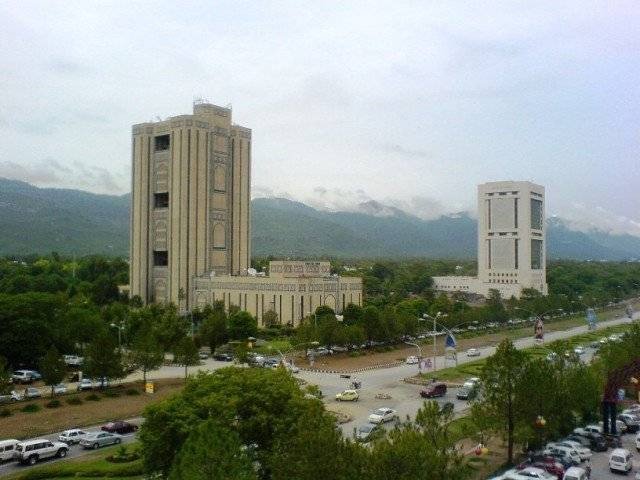
The lack of a transformative solution for an inaccessible large, high-risk mobile population, potentially moving poliovirus across and between Pakistan and Afghanistan, is a particular concern,
This was observed by the international polio watchdog, the Independent Monitoring Board (IMB) of the Global Polio Eradication Initiative (GPEI).
The group, in its report released on Thursday, did acknowledge the strong visible national and provincial leadership of the polio eradication programme in the country.
The 15th IMB report, “Every Hiding Place”, noted that the prime minister was taking an encouragingly hands-on-approach towards polio eradication, regularly chairing the National Task Force meetings apart from conducting fortnightly meetings with leaders at the provincial level.
The report follows a meeting in late October and early November 2017 in London with GPEI staff, donors, extended partners, together with health ministers and officials from Pakistan, Afghanistan and Nigeria.
Visa debacle
The report noted a barrier to the performance of the programme in Pakistan had become evident after the government first delayed and then rejected visas for 22 external polio consultants.
“In one case, the Ministry of Foreign Affairs denied a key WHO team leader entry into one of the territories of his assignment. Lack of absolute political and administrative alignment to the goals of the polio programme, and any whiff of the absence of “can-do” mindset will prevent Pakistan from getting over the finish line,” the report noted.
“This regrettable bureaucratic process failure could cost Pakistan its international reputation if it contributes to an outbreak of poliovirus.”
Achilles heel
While the virus is said to be concentrated in a few reservoirs, however, the limited effectiveness of health workers in a place like Islamabad was identified by the report as a problem and a decision to appoint more effective staff has been taken.
The report also identified the twin cities of Islamabad and Rawalpindi as a ‘third hotspot’ where the virus has found a new home.
Isolates from Islamabad and Rawalpindi mean that there is transmission outside the core polio reservoirs, the report noted, adding that the transmission “ping-pong” between the twin cities and extends to adjoining areas.
The Pakistan Polio Programme leadership described Islamabad as, “Our Achilles heel for some time now”.
The polio programme, the report said, has not been reaching around 11 slums in the capital. Despite efforts, it observed that the virus has stubbornly persisted among in Islamabad and neighbouring Rawalpindi.
Presenting an overview of the epidemiological situation in the country, the report noted that transmission of the poliovirus has been interrupted at every site.
In spite of a low number of paralytic cases, the poliovirus continues to be found in many parts of the country, the report noted.
The main concern, it said, lies with the ongoing circulations of poliovirus in Quetta, Karachi and some parts of Sindh as well as the twin cities.
Endorsing GEPI’s approach of treating Pakistan and Afghanistan as one epidemiological block with poliovirus corridors spanning across the two countries, IMB emphasised on the continued action by the governments of the two countries to work cooperatively to secure strong cross-border arrangements for polio vaccination.
The report noted that the current programme performance is yet to reach the level necessary to clear wild poliovirus out of either of these two endemic countries, calling for a transformative solution for an inaccessible large, high-risk mobile population, potentially moving poliovirus across and between the two countries.
The quality of microplanning and micro-censuses is vital when there is such large-scale population movement, the IMB underlined.
While the polio programme in both Pakistan and Afghanistan, is focused on high-risk districts, the high-risk mobile populations which enter and leave key reservoir areas and the major population flows across the borders is a major threat.
It recommended that the composition of these high-risk populations should be determined and their movements mapped through detailed assessment, profiling and small area analysis to segment districts so that intensive efforts can be directed towards the most polio-vulnerable geographies.
Published in The Express Tribune, December 8th, 2017.


1736510783-0/fizza-(8)1736510783-0-165x106.webp)

1736509432-0/fizza-(7)1736509432-0-165x106.webp)



1736508423-0/Express-Tribune---News-Desk-(9)1736508423-0-270x192.webp)
1736503865-0/Express-Tribune---News-Desk-(8)1736503865-0-270x192.webp)


1736332856-0/Untitled-design-(20)1736332856-0-270x192.webp)



1736334465-0/sidra--(45)1736334465-0-270x192.webp)






COMMENTS
Comments are moderated and generally will be posted if they are on-topic and not abusive.
For more information, please see our Comments FAQ